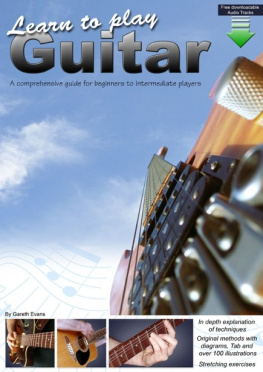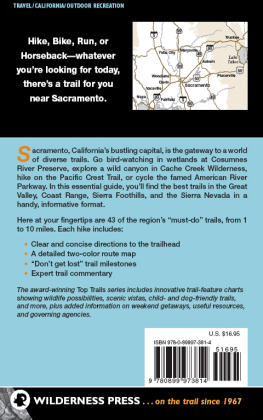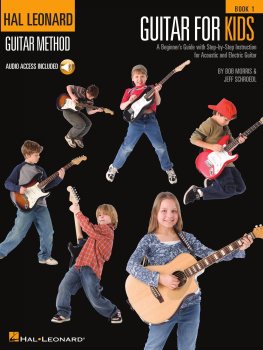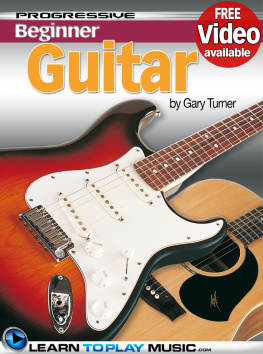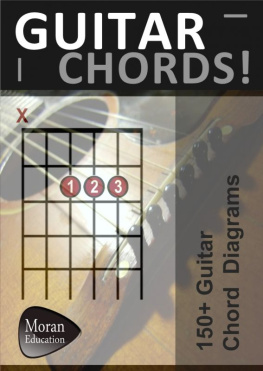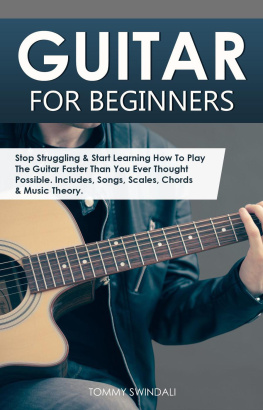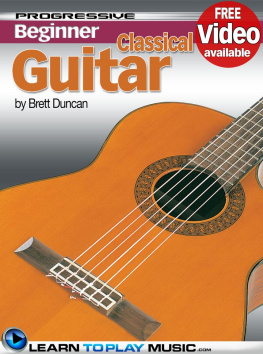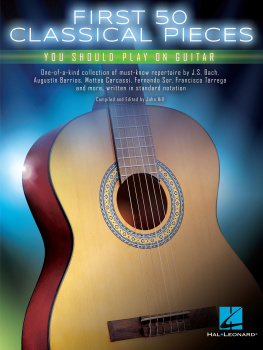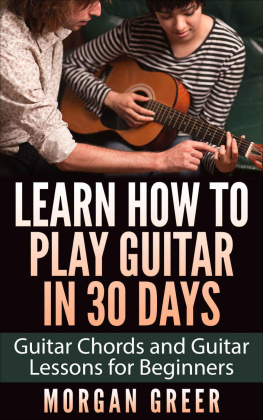Table of Contents
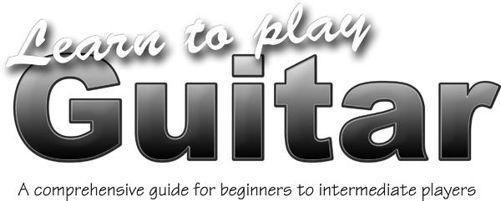
ISBN 978-0-9576506-4-0
Written by Gareth Evans
Photography, Diagrams and Cover design by Gareth Evans
Additional Illustrations by Chris Evans
Copyright 2012 by Intuition Publications
www.guitar-book.com
International Copyright Secured. All rights reserved. No part of this publication may be reproduced in any form or by any means without the prior written permission of the publisher.
Audio Tracks
These can be downloaded for free from
Introduction
This book is designed for beginners to intermediate players. It explains in a simple way the fundamentals of areas such as technique, theory, and fret-board layout, some of which you are better off knowing now, rather than after a few months, or even years of playing.
Depending on your experience some of the subjects, particularly earlier on, may already be familiar although there may be something you have missed and whatever your strengths are there might be other areas to be brought up to speed. This book looks at technique in some depth.
Music theory is reinforced by musical pieces in various styles, which should make the learning process more practical and enjoyable. The pieces are designed for beginners but can be adapted by more experienced players by making their own melodies and / or improvising using the scales.
Each audio track has two versions, a demo track to show how the piece should sound, followed by a backing track where the guitar has been removed for you to play over.
Stretching is particularly important in the earlier stages as the hands are more prone to injury and annoying pains before they have got used to playing. At the back of the book are some . You dont need to wait until you have finished the book to read that section as the advice can be useful from the beginning.
Some parts of the book refer to and are linked to other parts, to return to your previous location just use the back button on your eReader.
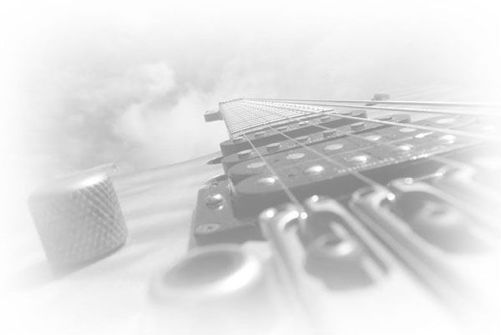
Chapter 1 - The Beginning
The Guitar
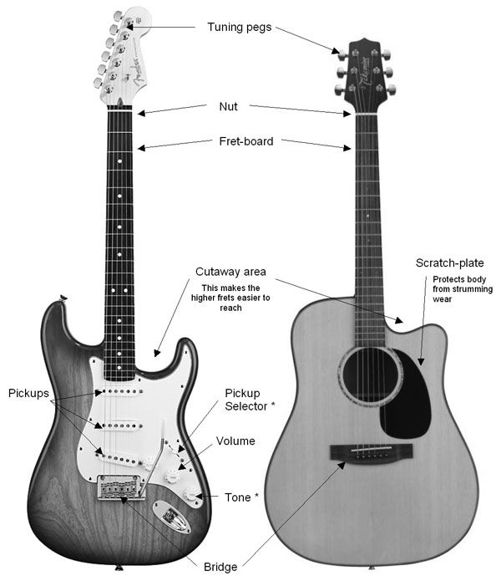
* The Pickup selector switch is to choose which pickups to use. Ranging from a sharp heavy sound with the switch back for the pickup near the bridge, to a softer mellow jazzy sound with the switch set forward for the pickup near the fret-board. * The Tone knob controls the volume proportion between the high and low frequencies, in other words its the treble and bass.
Basic TechniqueHolding the Guitar and using a Pick
When sitting to play the guitar you should be upright with the guitar upright on your lap and its neck tilted upward slightly. It can help to have the guitar as balanced on the lap as you can, as this leaves the hands free to play it rather than have to hold it upright too.
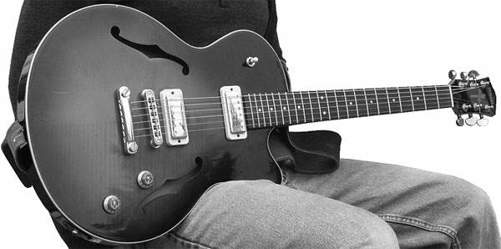
With an acoustic guitar you can hold the body of the guitar under your strumming arm. Using a music stand at eye level for reading can make it easier to maintain good posture and is more comfortable than crouching over your guitar to read music off a table or desk. Pegs can be used to hold pages open.
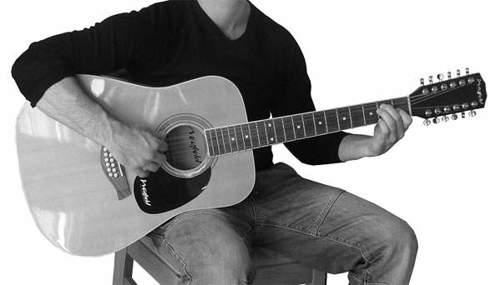
Sometimes when standing up to play, the guitar is slung low, usually for style. For the best position to play in however, its better not to have the guitar slung too low otherwise it becomes difficult for your fretting hand to reach around the neck. Wearing a strap while sitting can also give extra stability and comfort.
The pick should be held between the thumb and the index finger. The parts in contact with the pick should be the sole / tip area of the thumb and the side of the sole of the index finger. You could put your hand out in front of you and hold the pick as shown in the photo below. There only needs to be a small bit of pick sticking out from your grip. Too far out and we dont have as much control causing it to flap about within our grip as we pluck the strings.

When writing we hold the pen nearer the tip while resting the side of our hand on the paper, this way we can get control over the pen and write neatly. If we were to hold the pen further away from the tip without resting our hand on the paper our writing could look pretty messy! Similar applies to using a plectrum. Unless you are strumming it is best to rest your hand on the guitar, this way you can get more control and accurately play the strings you intend to.
On the picture below left the wrist / muscle at the base of the thumb area is resting on the guitar. Use this technique. Below right the hand is hovering over the guitar. This isnt very easy to control and makes it likely you will accidentally play strings that you didnt intend to.
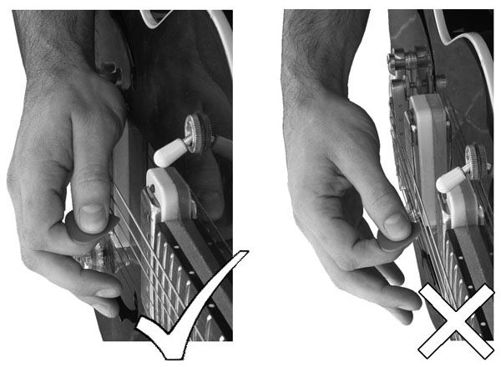
When playing the higher strings the hand moves down and the wrist / muscle at the base of the thumb area rests on the lower strings. This mutes the lower strings when we dont want them to sound. It also maintains the same posture for the hand across all six strings rather than bending the wrist down and stretching the fingers to reach the higher ones. If you have a movable bridge try not to rest the hand on it and move it while you are playing.
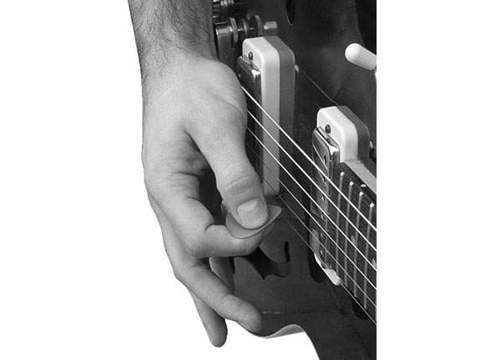
Some players like to have the remaining fingers tucked in, others like to have them fanned out. To get more control when playing the higher strings you could also rest the little finger on the guitar just below the high E string.
The metal bars on the guitar neck are frets. You push the string down just behind these with fingers from your fretting hand to get different notes when the string is plucked by the other hand. Avoid bending the string up or down as you press so that the note doesnt go out of tune. If the string makes a buzzing noise then you might need to press down a little harder.
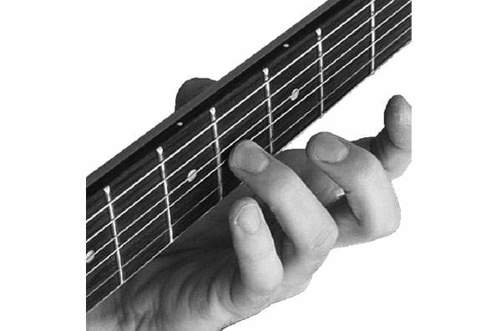
Having said that you shouldnt press too hard either because whether you press quite hard or just hard enough the note will still be clear! You can find out by pressing a finger very lightly on a fret while plucking the string, gradually increase the pressure until you hear a clear note, thats all the pressure you need. If you practise like this so it becomes how you play, then eventually youll move around the fret-board easier without your fretting hand getting tired.
Try this on various strings and frets using all fingers from the index to the little finger (and dont forget to use the technique from the last section for the hand that plucks the strings). Youll probably find the little finger more difficult than the rest but dont worry, as this is something that can be worked on over time.
Next page
